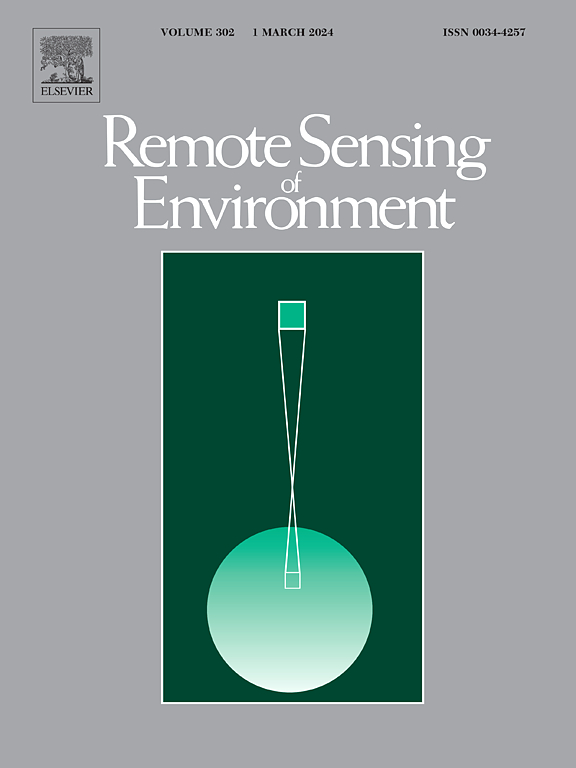Uncertainty quantification for forest attribute maps with conformal prediction and k-nearest neighbor method
IF 11.1
1区 地球科学
Q1 ENVIRONMENTAL SCIENCES
引用次数: 0
Abstract
Forest attribute maps relying on remotely sensed data are increasingly required for local decision-making related to the use of forest resources. Such maps always have uncertainty, which can be challenging to quantify. The objective of this work is to introduce the conformal prediction methodology to uncertainty quantification in forest attribute mapping, particularly for the -NN method. We compare several conformal -NN procedures for the mapping of total volume, broadleaved volume and Lorey’s height using Sentinel-2 satellite images and airborne laser scanning data. We show that all procedures produce valid prediction intervals in the sense that they contain the true value with the desired probability, for example 90%. We use multiple measures to quantify how well the prediction intervals adapt to the difficulty of prediction in different forest strata. We found that there are multiple methods for -NN to produce prediction intervals competitive with those produced by conformal quantile regression. These methods include conformal prediction based on the standard deviation or quantiles of the nearest neighbors with commonly used values of . We present how to produce a forest attribute map with the proposed conformal prediction intervals. We also show a theoretical coverage guarantee for the jackknife conformal -NN procedure. We recommend conformal prediction for unit-level uncertainty quantification of forest attribute maps.
保形预测与k近邻法森林属性图的不确定性量化
依靠遥感数据的森林属性图越来越需要用于与森林资源利用有关的地方决策。这样的地图总是有不确定性,很难量化。本文的目的是将保形预测方法引入森林属性映射的不确定性量化,特别是k-NN方法。我们使用Sentinel-2卫星图像和机载激光扫描数据比较了几种保形k-NN方法对总体积、阔叶体积和Lorey’s高度的映射。我们表明,所有的过程都产生有效的预测区间,因为它们包含期望概率的真值,例如90%。我们使用多种度量来量化预测区间对不同森林地层预测难度的适应程度。我们发现k-NN有多种方法可以产生与保形分位数回归产生的预测区间相竞争的预测区间。这些方法包括基于k个最近邻的标准差或分位数的共形预测,其常用值为k。我们介绍了如何使用所提出的共形预测区间生成森林属性映射。我们还给出了一个理论的复盖保证。我们建议对森林属性图的单位级不确定性量化进行保形预测。
本文章由计算机程序翻译,如有差异,请以英文原文为准。
求助全文
约1分钟内获得全文
求助全文
来源期刊

Remote Sensing of Environment
环境科学-成像科学与照相技术
CiteScore
25.10
自引率
8.90%
发文量
455
审稿时长
53 days
期刊介绍:
Remote Sensing of Environment (RSE) serves the Earth observation community by disseminating results on the theory, science, applications, and technology that contribute to advancing the field of remote sensing. With a thoroughly interdisciplinary approach, RSE encompasses terrestrial, oceanic, and atmospheric sensing.
The journal emphasizes biophysical and quantitative approaches to remote sensing at local to global scales, covering a diverse range of applications and techniques.
RSE serves as a vital platform for the exchange of knowledge and advancements in the dynamic field of remote sensing.
 求助内容:
求助内容: 应助结果提醒方式:
应助结果提醒方式:


